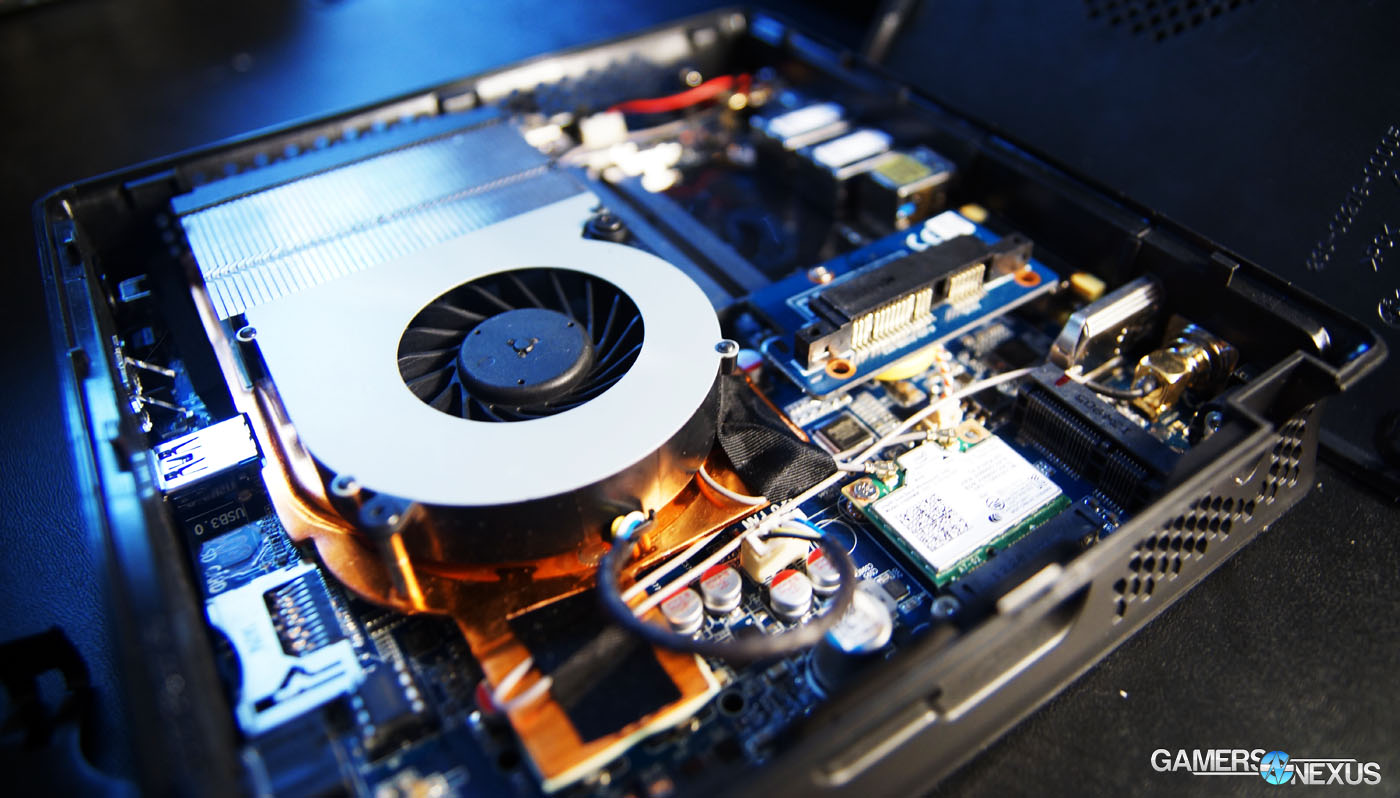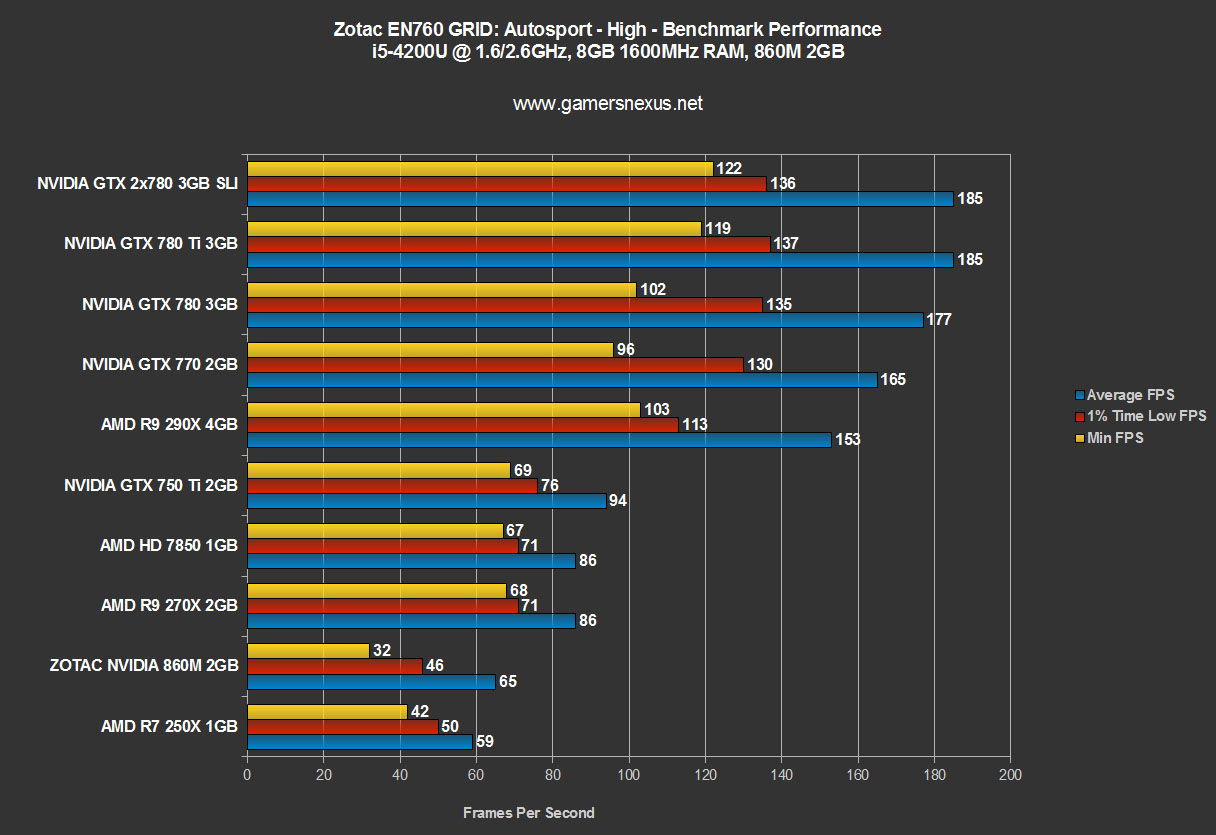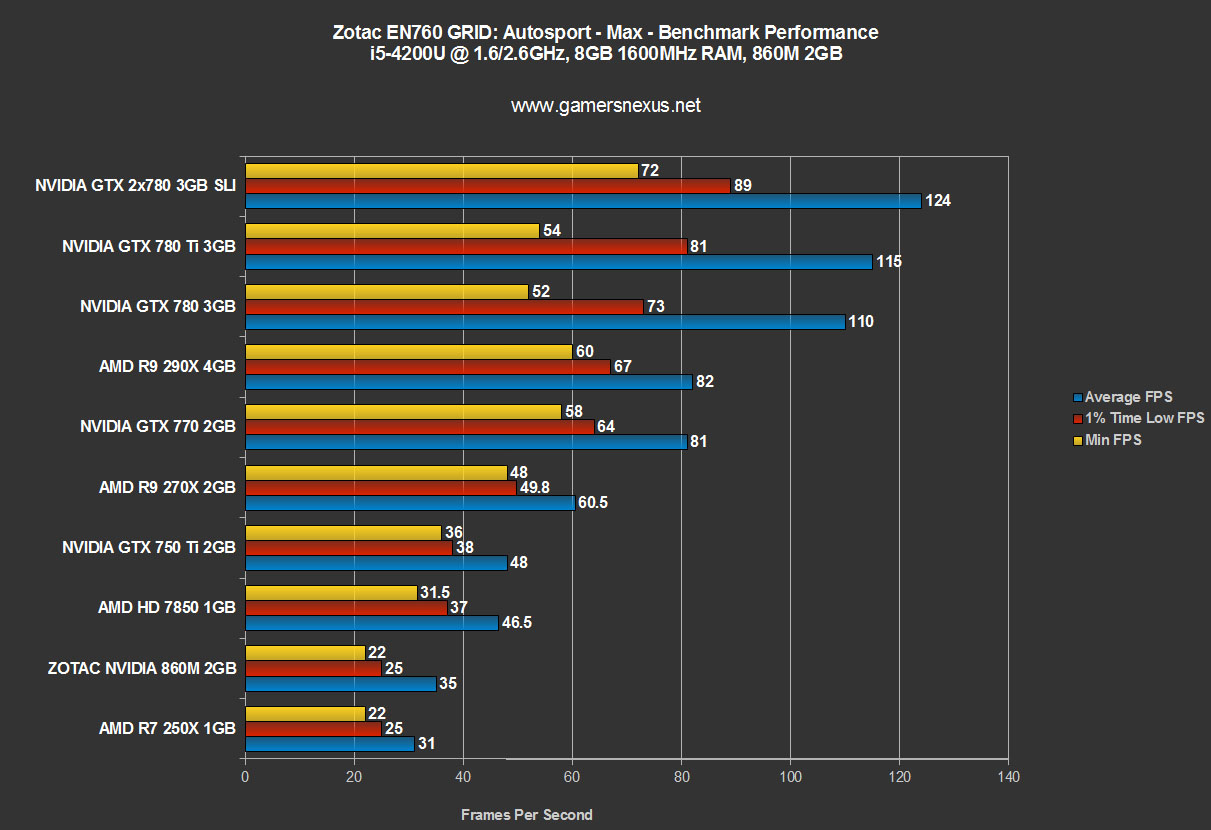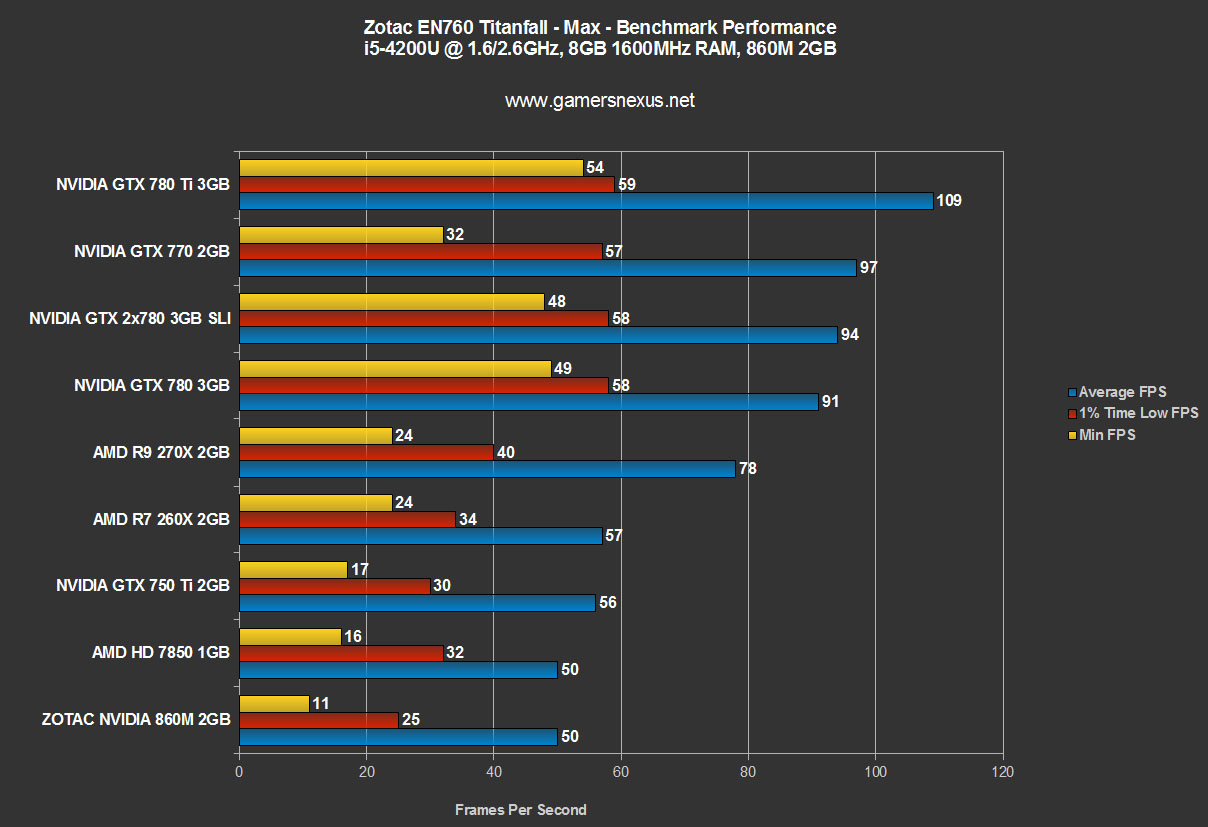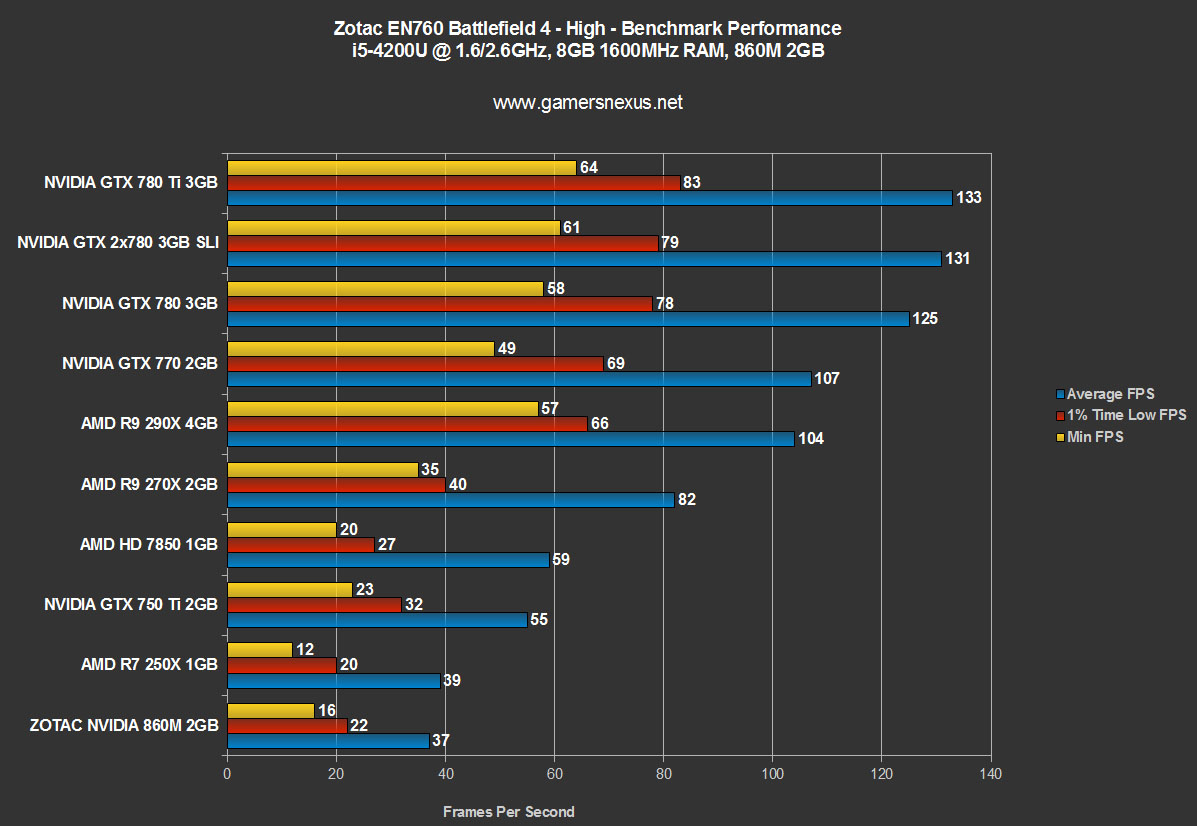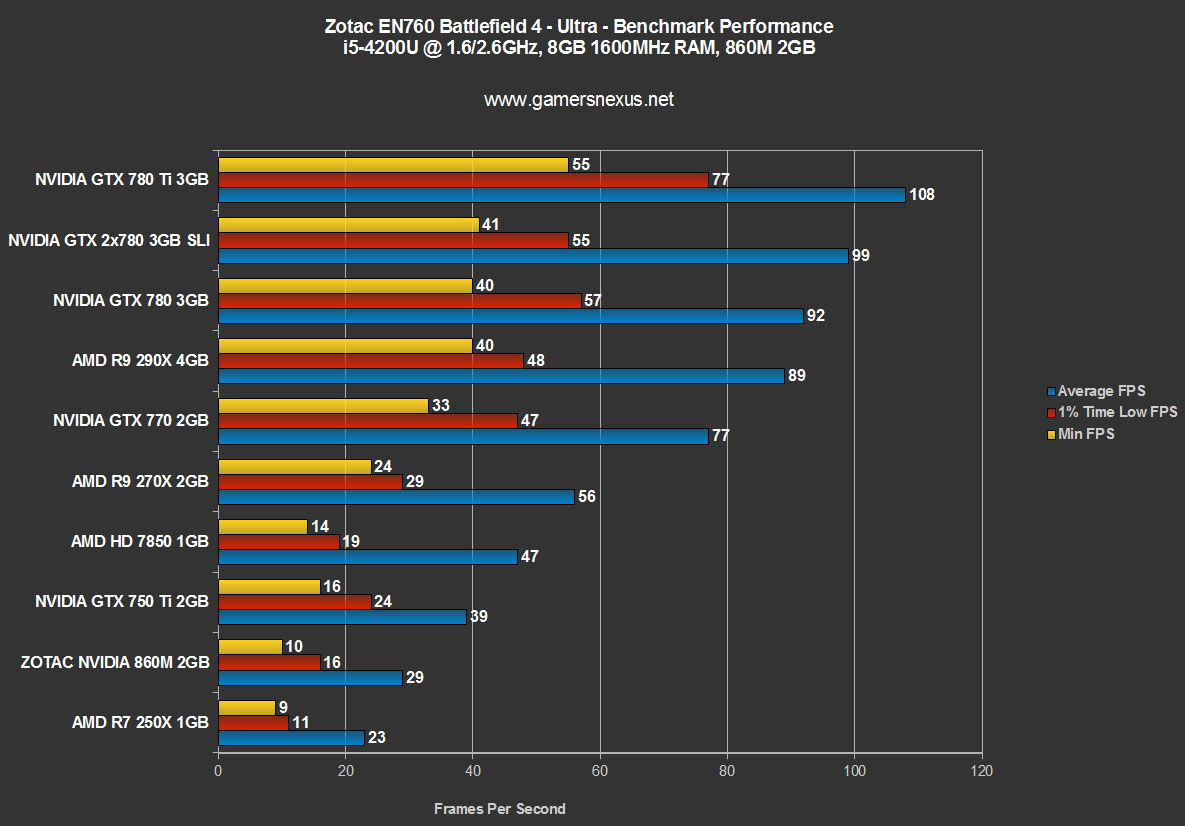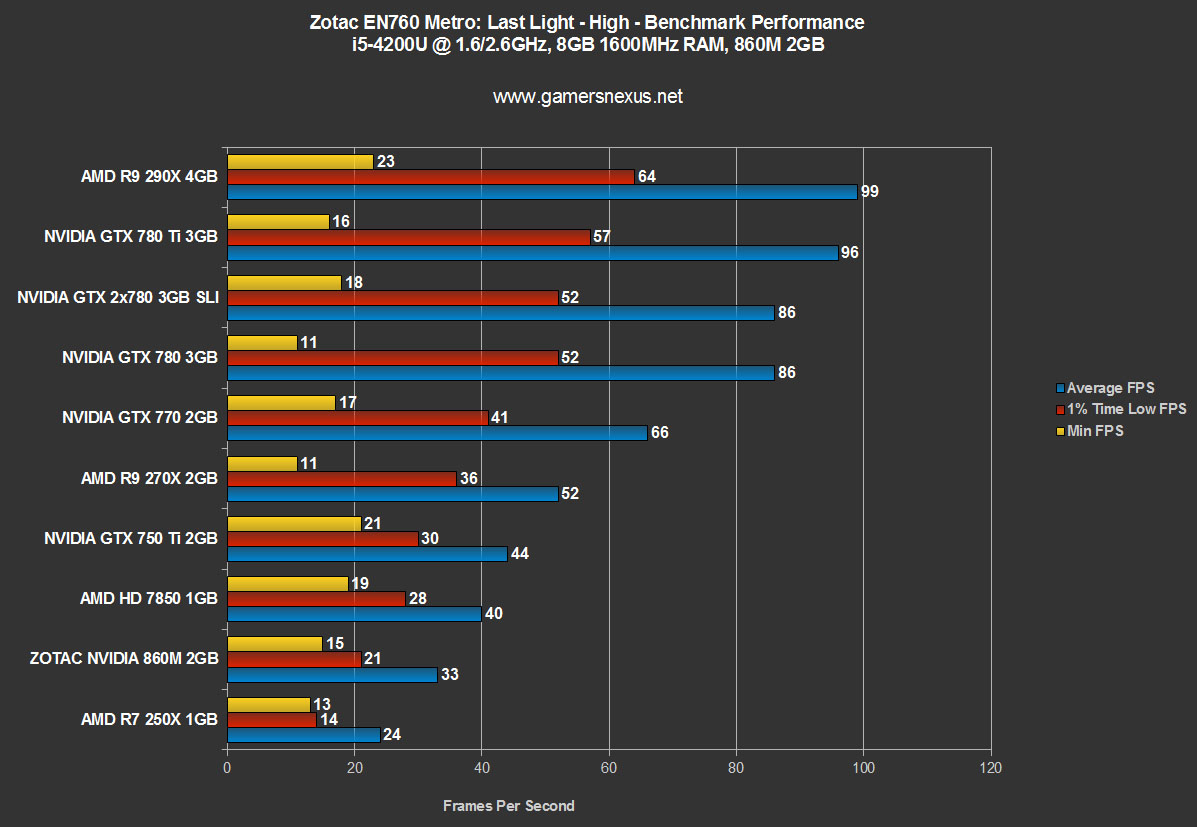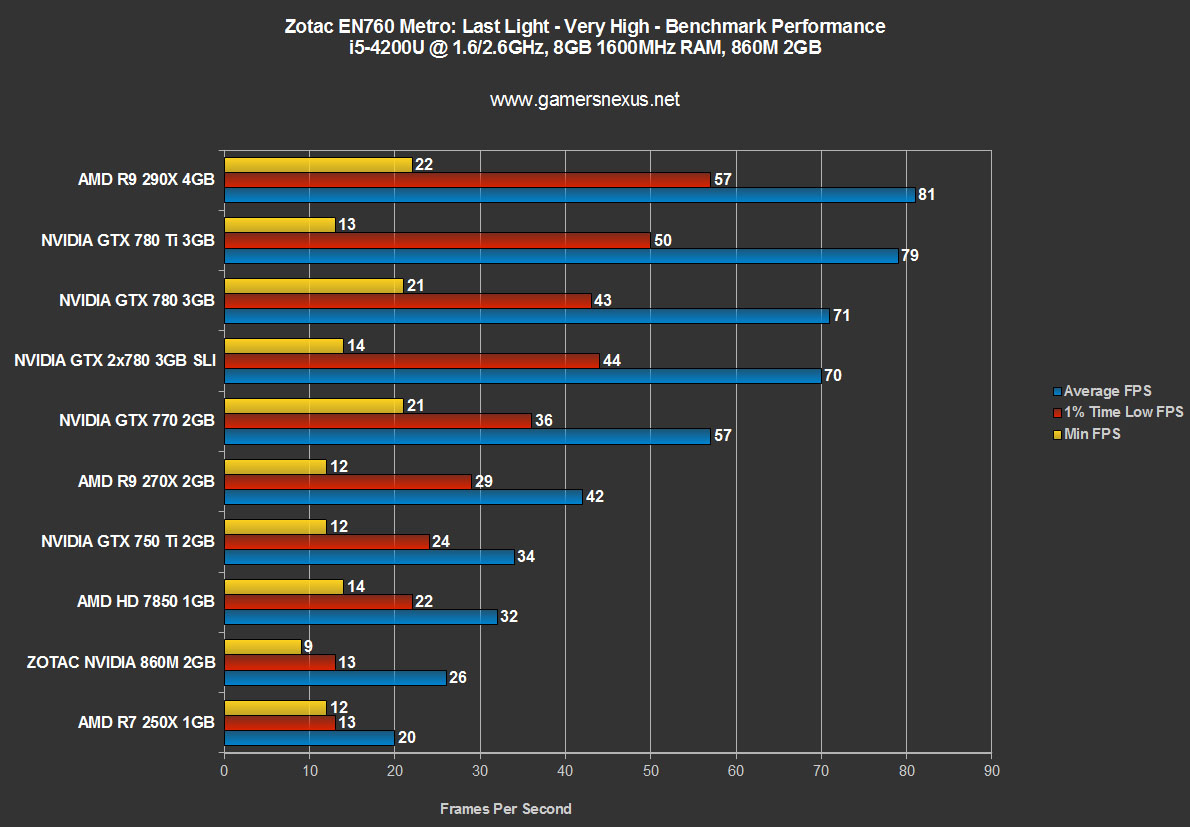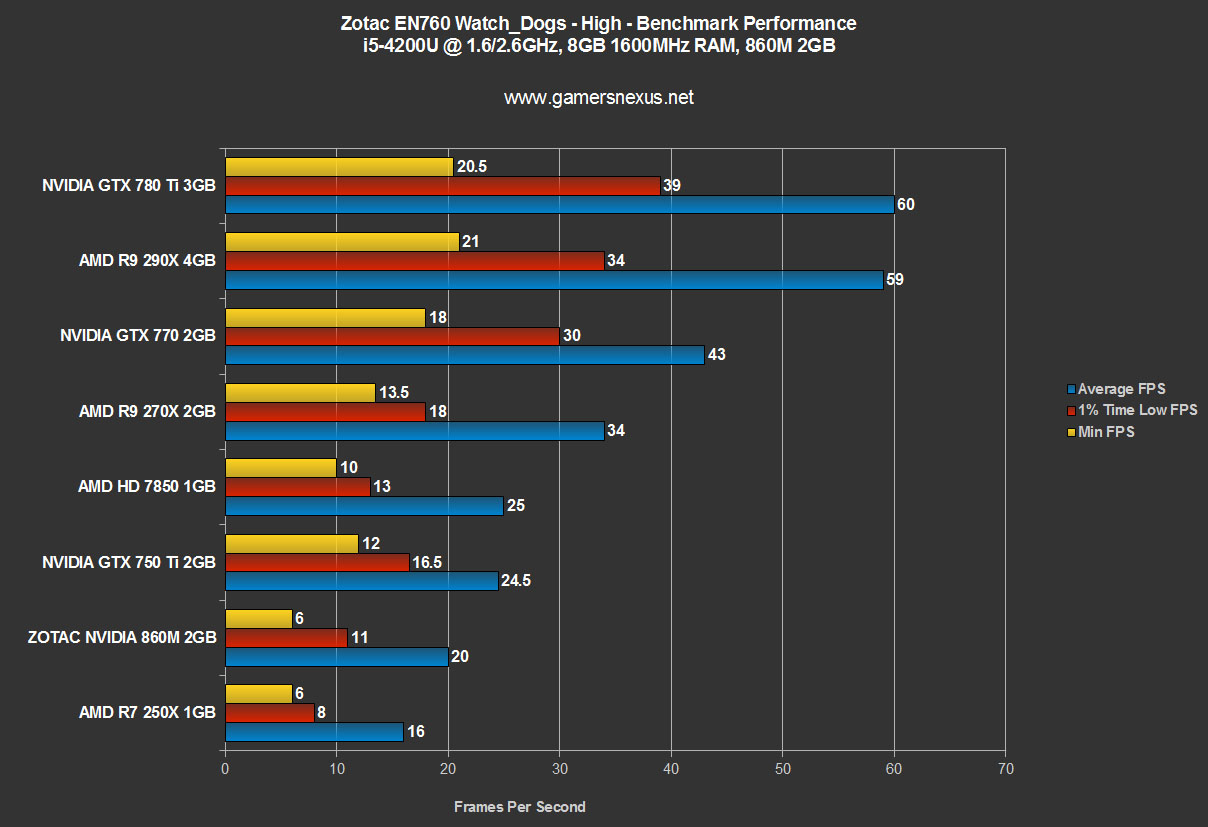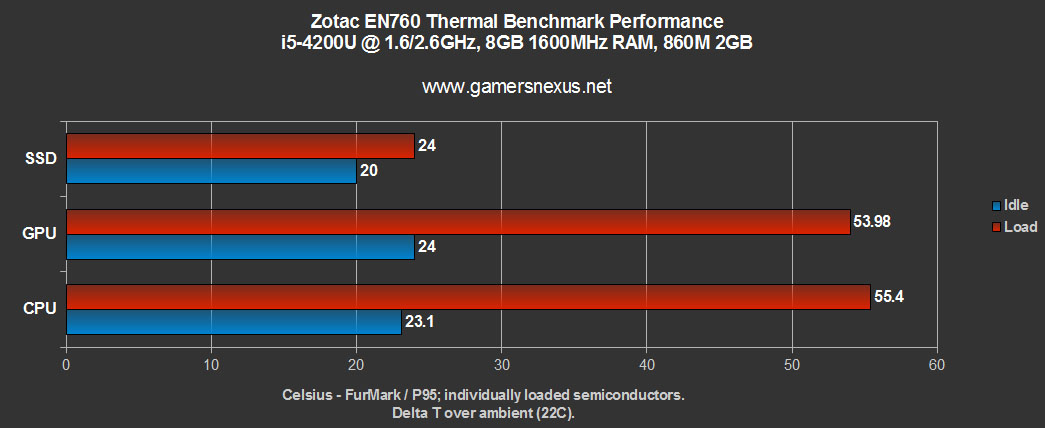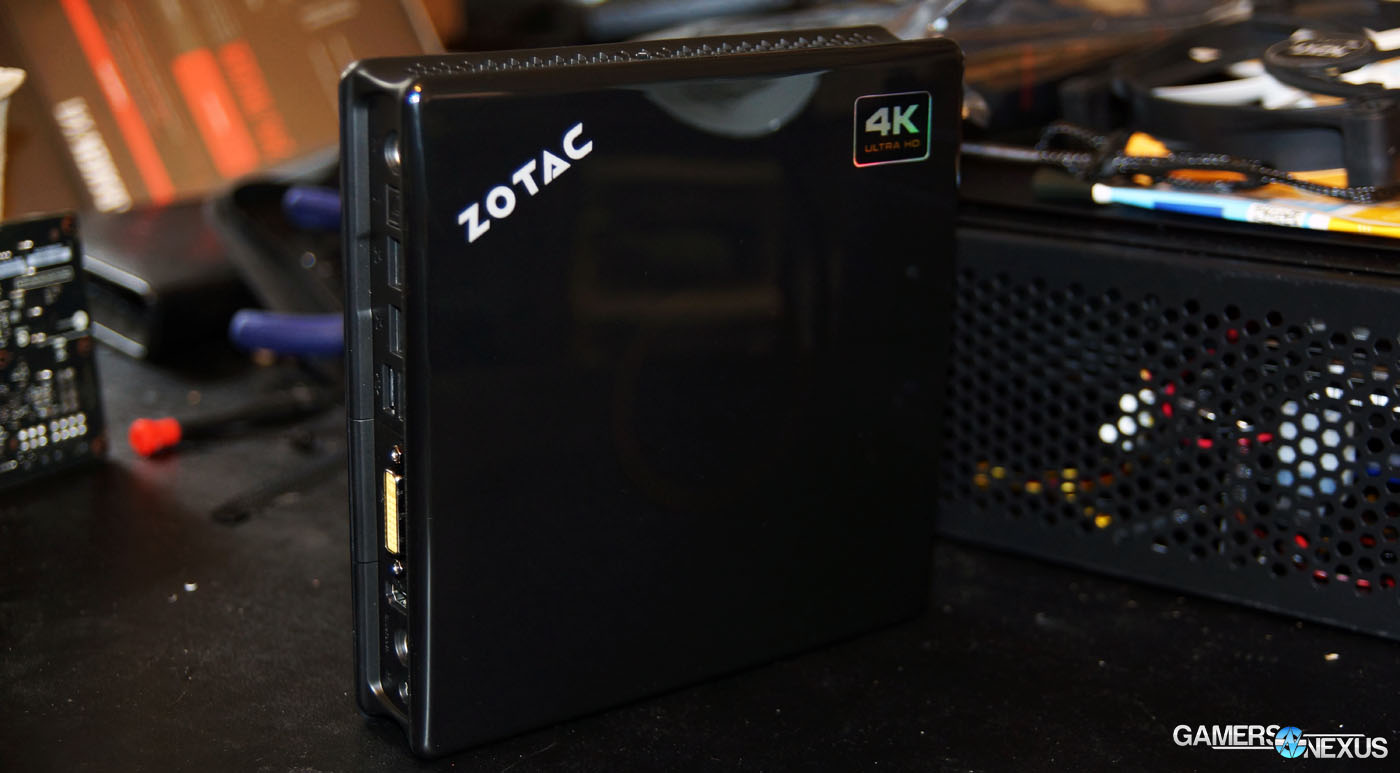The delay of Valve's Steam Machine (or Steam Box) has forced the hand of systems manufacturers. Alienware, Gigabyte with the Brix, and now Zotac have all begun shipping their would-have-been Steam Machines as DIY mini-PCs. Steam has disallowed the shipment of officially branded Steam Machines until the completion of its haptic controller, leaving system manufacturers scrambling to untie the resources dedicated to machines that were originally slated for a 2014 launch.
In an official capacity, Gigabyte's BRIX Pro and Zotac's EN760 are not "Steam Machines" -- at least, not by branding -- but they might as well be. The EN760 (Newegg page) ships in two models: The EN760 and EN760 Plus. The base model ships without RAM or permanent storage at $540; the Plus edition includes a single 8GB stick of 1600MHz RAM and 1x1TB 5400RPM HDD. Both units are outfitted with an 860M mobile GPU, i5-4200U mobile CPU, and custom board design to fit in a 7.4" x 7.4" x 2" (188 x 188 x 51mm) shell.
And we arrive to the review. Today's review of Zotac's EN760 gaming ZBOX and 860M benchmark aims to look at thermals, build quality, gaming performance, and scalability to 4K displays.
Zotac EN760 ZBOX Video Hands-On & Review
Zotac EN760 ZBOX Specs
| Spec | ZOTAC EN760 | ZOTAC EN760 Plus |
| SKU | ZBOX-EN760 | ZBOX-EN760-P |
| Memory Compatibility | 2x204-pin DDR3L SO-DIMM Up to 16GB DDR3-1600MHz | 2x204-pin DDR3L SO-DIMM Up to 16GB DDR3-1600MHz |
| RAM | None. | 1x8GB DDR3-1600. |
| Storage | None. Supports 1x2.5", 1xmSATA | 1x1TB 5400RPM HDD Supports 1xmSATA |
| CPU | Intel i5-4200U 1.6GHz / 2.6GHz TB 3MB L2 Cache | Intel i5-4200U 1.6GHz / 2.6GHz TB 3MB L2 Cache |
| GPU | GTX 860M 2GB GDDR5 / 128-bit bus 1020MHz BCLK / 1097MHz Boost CLK | GTX 860M 2GB GDDR5 / 128-bit bus 1020MHz BCLK / 1097MHz Boost CLK |
| I/O | - HDMI - DVI-I - SD / SDHC / MMC / SDXC Card Reader. - 2xEthernet - 802.11ac - Bluetooth 4.0 - 4xUSB3.0 - 1xHDMI Audio - 1x3.5mm Audio | - HDMI - DVI-I - SD / SDHC / MMC / SDXC Card Reader. - 2xEthernet - 802.11ac - Bluetooth 4.0 - 4xUSB3.0 - 1xHDMI Audio - 1x3.5mm Audio |
| MSRP | $540 | $690 |
| Release Date | July, 2014 | July, 2014 |
Zotac provided the EN760 non-Plus ZBOX for review purposes, so we were able to install our own RAM and SSD in the unit. The company has also noted that it intends to promote the DIY solution most heavily -- and for our audience, before even getting into the review, I'd agree with that. There just isn't a lot of value added in a single DDR3-1600 / 8GB stick and 1TB 5400RPM HDD; actually, the HDD is slow enough that it detracts from gaming performance when compared against the option of installing a 7200RPM or budget SSD alternative. A 5400RPM HDD will also operate much louder -- a noteworthy factor when building a home-theater PC.
The EN760 hosts 2x204-pin DDR3L SO-DIMM memory slots (effectively laptop memory), capable of operating at 1600MHz with 16GB capacity. A single 2.5" drive sled is present, mounted just above the memory, and is joined by a single mSATA slot for slimmer devices.
Consider the following: the DIY model of the EN760 costs $540; the pre-installed model ships at $690. This $150 difference is better spent on a 128GB MX100 SSD ($75) and 2x4GB DDR3-1600 RAM ($80) for a significantly quieter, faster HTPC / mini-gaming PC. If 1TB of spindle storage is desirable, it can be had at $80 while retaining a 7200RPM operating speed -- significantly better and $5 more than the EN760 Plus. It takes about 7 minutes to install the RAM and HDD the first time. Seconds the next time.
That out of the way, let's look at the other specs.
Networking capabilities include an 802.11ac Intel Gigabit wireless card (as found in laptops) with an antenna, so you won't need an external USB wireless adapter. The ZBOX also hosts native Bluetooth 4.0 support (along with an antenna) for easier mobile connectivity. Two RJ-45 ethernet jacks are present for those who prefer a more stable and wired connection.
I/O is pretty standard affair -- see the specs table above for all that. I sometimes felt limited on the 4xUSB3.0 ports (mouse, keyboard, controller, external Blu-Ray or storage), but it was survivable.
EN760 Build Quality & Installation
The ZBOX measures in at 7.4" x 7.4" x 2" (188 x 188 x 51mm), making it smaller than what is possible to be built by hand for a similar price. The outer shell is a sturdy plastic held together with a few screws; removing these screws allows the side panel to slide off, revealing the proprietary board layout, (empty) RAM and HDD slots, and the relatively large semiconductor cooler.
Plastics quality isn't anything to complain about. It's sturdy and ventilated throughout, and although fingerprint smudges abound, the shell feels as if it'll hold-up to regular open/close cycles.
The layout of the system is interesting, but tight, and set off concern for thermals (which I test below). Our GPU (and presumably the CPU) is hosted underneath a large aluminum and copper heatsink, actively cooled by a single push fan. Heat exhausts out the back of the unit, slotted for better ventilation. These are the hottest components in the system, naturally.
Immediately adjacent to this heatsink is a split-level compartment for storage and RAM -- think of a split-level home, I suppose. The RAM lives slightly below the rest of the components, the 2.5" storage lives above the RAM. Close quarters.
Installation is pretty straight-forward. I've already done a video on how to install RAM & an SSD in the EN760, but we'll briefly cover it here. The steps include:
- Open up the ZBOX by removing the two screws on the rear side. Pop the panel off.
- Ensure you are grounded.
- Remove the retention screw for the 2.5" sled. Remove the sled.
- Install the RAM modules into the SO-DIMM slots. Do so carefully and do not force anything. Wait for the latches to pop into place.
- Install the SSD/HDD on the sled with the SATA header on the opposite side of the retention screw.
- Mount the SSD. Screw it back down. Close the box.
- Done!
Anyone can handle this, really. System builder or not, the "mainstream" buyer would be plenty capable of this installation. Very easy and straight-forward. No screws to lose. No complaints.
Zotac EN760 as a Steam Box - DIY Steam Machine
Setting up the EN760 as a DIY Steam Machine would be a pretty trivial task. The EN760 may as well be a Steam Machine, anyway -- it's just missing the OS and controller. A quick drop of nVidia's new GRID controller or the mainstay Xbox 360 wireless PC controller, though, and that problem is solved. To install SteamOS, follow these steps:
- Format a bare flash drive to FAT32.
- Download the SteamOS installer zip and extract it to the flash drive.
- Boot the ZBOX to the flash drive.
- Run through the installer and configure as desired.
- Boot to SteamOS. Done.
Very easy to do, you're just missing that haptic controller -- but there's no reason the more standard Xbox 360 or new GRID controllers can't do the same job for gaming from a couch.
Continue to page 2 for the full thermal and FPS benchmarks to see gaming performance.
Test Methodology
The ZBOX required two different types of tests: Thermals and framerate / FPS performance. We tested both. Our standard test methodology was deployed for thermal testing -- namely, using Prime95 with LFFTs to load the CPU 100%, then logging thermals via HW Monitor+. You can read the full CPU thermal test methodology in one of our CPU cooler reviews.
GPU thermal analysis followed our case testing methodology. We ran the FurMark 15-minute 1080 burn-in test, putting the GPU under 100% load and forcing temperatures to their peak. No gaming application should ever really put the CPU or GPU under 100% load, so these are worst case scenarios to show the limits of the small EN760.
As for FPS testing, that was done using our standard game testing methodology. All tests were conducted 3 times for parity, then averaged. Outliers were retested, if present. We tested the EN760's FPS / framerate performance using the following titles:
- GRID: Autosport.
- Titanfall.
- Battlefield 4.
- Metro: Last Light.
- Watch_Dogs.
We've previously written that Watch_Dogs is one of the most horribly-optimized games we've ever tested, but it's popular enough to warrant testing. Titanfall has gotten much better since our initial benchmarks. Metro has replaced Crysis as the gaming world's best real-world benchmark, given its relatively even load distribution and high-fidelity graphics. Battlefield 4 is popular (though waning) and will put heavier load on the CPU than the other titles here, making for a better understanding of just how heavily that 4200U's dual-core, 2.6GHz limits impact game performance.
As for GRID: Autosport, I just thought it'd be fun. It's a new game, almost perfectly optimized, and strikes me as something that would see play in a home-theater or living room environment.
NOTE: The video cards cannot be tested on the same platform due to the nature of the EN760. This means that we used our standard test bench (below) to test the discrete graphics cards, but the EN760 to test the 860M. The CPU disparity (3570K overclocked vs. 4200U) plays a big role in performance and will show you the difference between building something and buying the ZBOX. It is not a linear comparison of graphics, but a system-wide comparison.
NVidia 340.43 beta drivers were used for all tests conducted on nVidia's GPUs. The 340.43 beta introduced performance improvements specifically for GRID. AMD 14.7 drivers were used for the AMD cards, which contain no notes of GRID-specific improvements.
| GN Test Bench 2013 | Name | Courtesy Of | Cost |
| Video Card | (This is what we're testing). XFX Ghost 7850 | GamersNexus, AMD, NVIDIA, CyberPower, ZOTAC. | Ranges |
| CPU | Intel i5-3570k CPU Intel i7-4770K CPU (alternative bench). | GamersNexus CyberPower | ~$220 |
| Memory | 16GB Kingston HyperX Genesis 10th Anniv. @ 2400MHz | Kingston Tech. | ~$117 |
| Motherboard | MSI Z77A-GD65 OC Board | GamersNexus | ~$160 |
| Power Supply | NZXT HALE90 V2 | NZXT | Pending |
| SSD | Kingston 240GB HyperX 3K SSD | Kingston Tech. | ~$205 |
| Optical Drive | ASUS Optical Drive | GamersNexus | ~$20 |
| Case | Phantom 820 | NZXT | ~$130 |
| CPU Cooler | Thermaltake Frio Advanced | Thermaltake | ~$65 |
The system was kept in a constant thermal environment (21C - 22C at all times) while under test. 4x4GB memory modules were kept overclocked at 2133MHz. All case fans were set to 100% speed and automated fan control settings were disabled for purposes of test consistency and thermal stability.
A 120Hz display was connected for purposes of ensuring frame throttles were a non-issue. The native resolution of the display is 1920x1080. V-Sync was completely disabled for this test.
The video cards tested include:
- AMD Radeon R9 290X 4GB (provided by CyberPower).
- AMD Radeon R9 270X 2GB (we're using reference; provided by AMD).
- AMD Radeon HD 7850 1GB (bought by GamersNexus).
- AMD Radeon R7 250X 1GB (equivalent to HD 7770; provided by AMD).
- NVidia GTX 780 Ti 3GB (provided by nVidia).
- NVidia GTX 780 3GB x 2 (provided by ZOTAC).
- NVidia GTX 770 2GB (we're using reference; provided by nVidia).
- NVidia GTX 750 Ti Superclocked 2GB (provided by nVidia).
Zotac EN760 860M GPU & Gaming Benchmark
The EN760 performed surprisingly well in most games. The box was matched up against the new GRID: Autosport, Titanfall, Watch_Dogs, and longer-standing Battlefield 4 and Metro: Last Light.
EN760 GTX 860M GRID: Autosport Benchmark
Set to "High" settings for the benchmark, the EN760 GTX 860M benchmark produced a 65FPS average framerate -- not bad at all! That places the 2GB 860M just above the $100 R7 250X 1GB card and just below the $170 R9 270X 2GB card. If you'd rather compare apples and apples, the GTX 750 Ti -- available between $120 and $150 -- ranked nearly 30% higher than the 860M. Moving on to the "Ultra" settings.
With GRID: Autosport maxed-out on all settings, the 860M hovers around 35FPS average. You won't be playing GRID at max settings, then, but achieving a target 60FPS is easily done with a hybrid mix of high and ultra game options.
EN760 GTX 860M Titanfall Benchmark
Looking to Titanfall, which we benchmarked upon release (and in beta), results are still in the realm of playability even on all "Max" (ultra/high) settings. Titanfall's performance has improved marginally with post-launch driver and software updates.
The 860M almost ties with last generation's $150 HD 7850. Considering the EN760 packs that 860M into such a small area, the results are fairly impressive. On max settings, the 860M handles Titanfall at right around 50FPS. 60FPS is our target number for best playability and smoothness, and that can be easily achieved by dropping a few settings to "high" instead of "ultra."
EN760 GTX 860M Battlefield 4 Benchmark
Battlefield 4 is more CPU-intensive than the previous titles, but also more intensive in general. The game was tested on preset "high" and preset "ultra" settings. Here are the results for both:
On "high," the 860M struggled to keep up with the 250X -- something that shouldn't happen. The reason this occurred is due to the CPU disparity I warned of earlier; that 4200U will slow things down in more CPU-intensive games, and although they're rare, Battlefield 4 is one of them. Other than that, performance was mediocre on high/ultra with the EN760. Definitely not its best suit. For best playability, you'd have to drop settings to a mix of medium and high to achieve 60FPS.
ZBOX EN760 GTX 860M Metro: Last Light Benchmark
Metro: Last Light has a built-in benchmark that has become somewhat of an industry standard for GPU testing. We ran the M:LL bench with "high" settings with normal tessellation and "very high" settings with high tessellation.
The 860M and 4200U struggle in this benchmark. There's not much of a performance difference between the two settings in Metro. Achieving 60FPS would require a mix of low and medium settings on the 860M.
ZBOX EN760 GTX 860M / 4200U Watch_Dogs Benchmark
As I've noted and linked a few times now, Watch_Dogs is one of the worst-optimized games we've ever benchmarked. Things have improved with drivers and software updates since initial release, but it's just not quite there yet.
The 860M -- like every other card on the bench -- struggled with Watch_Dogs on high settings. Just look at the 780 Ti: A $700+ video card can barely sustain 60FPS. Says something about the software more than the hardware. Still, Watch_Dogs is a popular title and seems to be liked among the living room PC crowd, so we've tested it. In order to play Watch_Dogs with stability on the 860M, you'd be resting closer to "low" settings. Maybe a low/medium hybrid, if you were to use our Watch_Dogs graphics optimization guide.
Zotac EN760 Thermal Benchmark - CPU, GPU, SSD
As for thermals, things are pretty straight-forward. Keep in mind that the below results are presented as Delta T over ambient, meaning we've subtracted ambient (22C) from the logged results.
The GPU's performance blew me away. I was anticipating a much hotter piece of silicon in such a tiny enclosure, but the 860M barely hit 54C under peak load. That's a bit warm for a desktop card with heavy emphasis on cooling and a larger enclosure, but for a single-fan solution in a tight box, it's really not bad.
The CPU hovered around 23C when idle, which is around 8C hotter than what we're used to for a budget air cooling solution. Under 100% load, we see thermals peaking near 56C at worst. That's beginning to get a bit concerning if regularly under 100% load, but keep in mind that most games will hardly touch the CPU anywhere close to that amount.
The SSD ran warm. Thermals sat around 20C when idle. Considering our SSDs normally idle closer to -- after subtracting ambient -- 2-3C, that's a massive difference. Load puts us around 24C, which is getting a bit more concerning. These temperatures won't kill your drive or threaten longevity considering the heat is coming from nearby components (the RAM lives underneath the SSD, the GPU lives to its side). It's warm, but not deadly. SSD internals don't start becoming threatened until closer to 65C.
Conclusion
We arrive to the question of who's best off buying this product. The EN760's small form factor, gaming performance, and GPU/CPU thermals are impressive when examined as a package -- especially at $540 pre-RAM / HDD. The price-point is exactly where it should be. I would advise against the "Plus" model. It takes all of 7 minutes to install the RAM and HDD the first time (and about 40 seconds the next time). As mentioned above, the $150 difference is better spent on a 128GB MX100 SSD ($75) and 2x4GB DDR3-1600 RAM ($80) for better speed, performance, and lower noise levels. If you need storage and can't use a NAS, a 1TB 7200RPM 2.5" HDD can be had at $80.
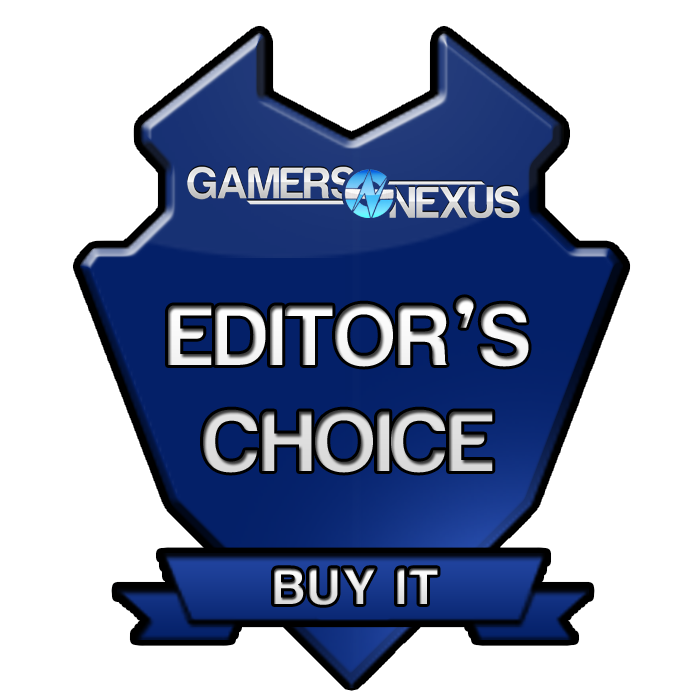 Anyone looking for a discrete, easily-hidden living room gaming PC, console replacement, or DIY DVR (after buying the capture equipment) should investigate the ZBOX. Its gaming performance ensures you'll be playing most modern titles at some mix of high and max settings -- maybe dropping down to medium for the most intensive games -- while still running at moderate temperatures.
Anyone looking for a discrete, easily-hidden living room gaming PC, console replacement, or DIY DVR (after buying the capture equipment) should investigate the ZBOX. Its gaming performance ensures you'll be playing most modern titles at some mix of high and max settings -- maybe dropping down to medium for the most intensive games -- while still running at moderate temperatures.
Do note that, despite marketing, this won't ever be playing games at 4K resolutions. Maybe if it's Angry Birds, but that's about the extent of it. We were unable to test 4K video capabilities due to lack of, you know, a million dollars -- but the Maxwell GPU does have 4K encoding and is known to work fairly well with non-intensive tasks (like video playback).
This is one of the few review products I actually wanted to keep for myself. Normally we sort of stuff them away in storage until future regression testing, but in the case of the ZBOX, I'm hoping to deploy a permanent model for all of the traveling we do for the site. This type of system strikes me as the ideal traveling companion for folks needing more power at the price than what a laptop would yield. Throw in a keyboard, mouse, HDMI cable, and a hotel TV, and you've got a mobile video editing rig with a lot of power.
A strong return from ZOTAC.
- Steve "Lelldorianx" Burke.
